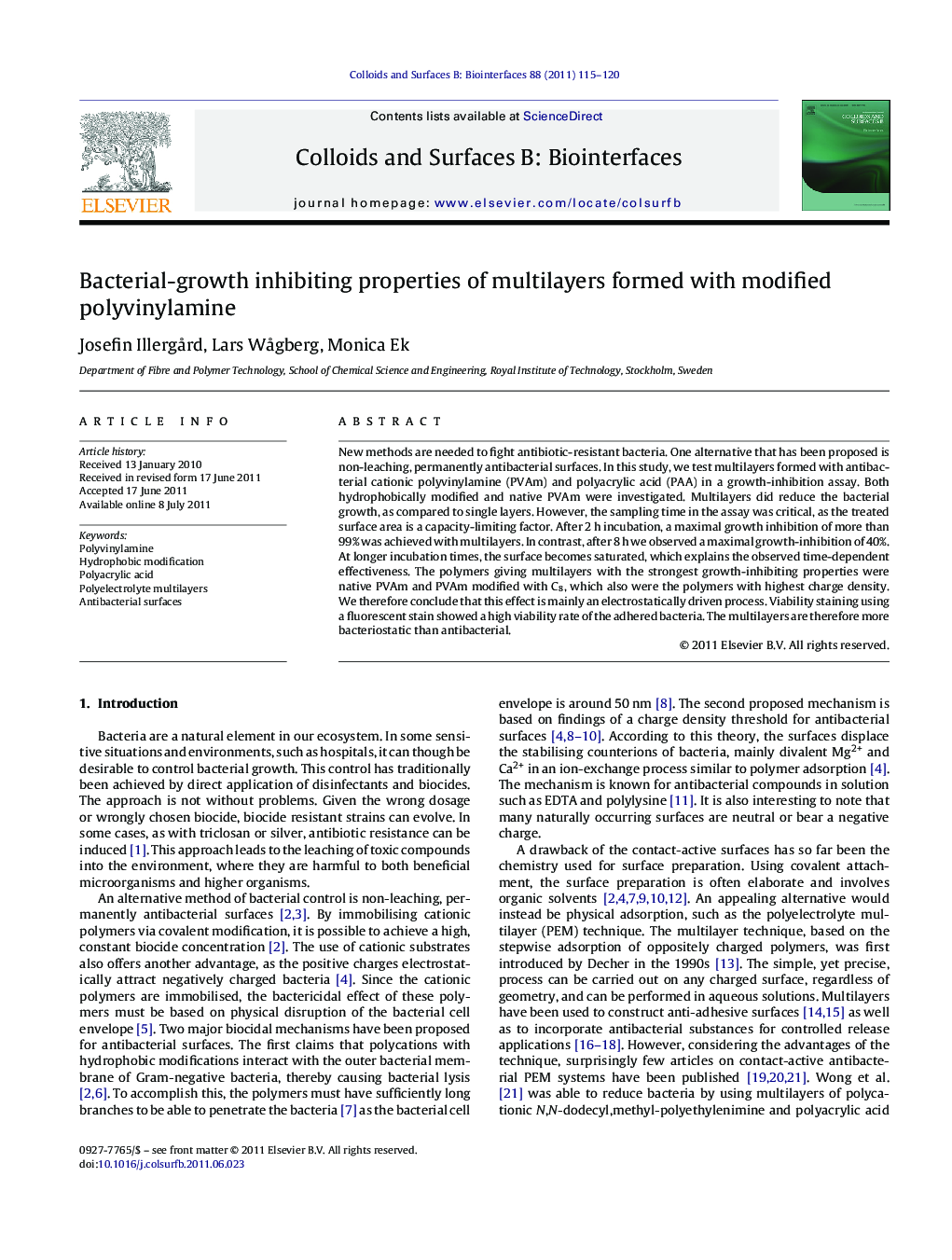| Article ID | Journal | Published Year | Pages | File Type |
|---|---|---|---|---|
| 601031 | Colloids and Surfaces B: Biointerfaces | 2011 | 6 Pages |
New methods are needed to fight antibiotic-resistant bacteria. One alternative that has been proposed is non-leaching, permanently antibacterial surfaces. In this study, we test multilayers formed with antibacterial cationic polyvinylamine (PVAm) and polyacrylic acid (PAA) in a growth-inhibition assay. Both hydrophobically modified and native PVAm were investigated. Multilayers did reduce the bacterial growth, as compared to single layers. However, the sampling time in the assay was critical, as the treated surface area is a capacity-limiting factor. After 2 h incubation, a maximal growth inhibition of more than 99% was achieved with multilayers. In contrast, after 8 h we observed a maximal growth-inhibition of 40%. At longer incubation times, the surface becomes saturated, which explains the observed time-dependent effectiveness. The polymers giving multilayers with the strongest growth-inhibiting properties were native PVAm and PVAm modified with C8, which also were the polymers with highest charge density. We therefore conclude that this effect is mainly an electrostatically driven process. Viability staining using a fluorescent stain showed a high viability rate of the adhered bacteria. The multilayers are therefore more bacteriostatic than antibacterial.
Graphical abstractFigure optionsDownload full-size imageDownload as PowerPoint slideHighlights► Non-leaching antibacterial surfaces control bacterial growth without developing antibiotic resistance. ► Polyelectrolyte multilayers using water based solutions. ► Multilayers reduce bacterial growth. ► Hydrophobically modification not significant. ► Charge determining factor.
